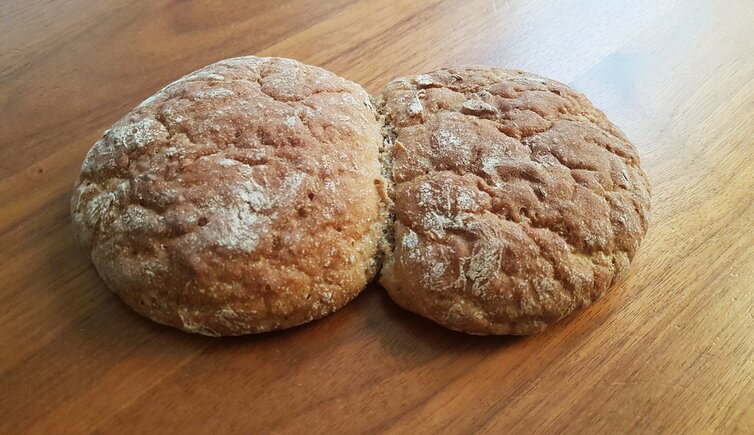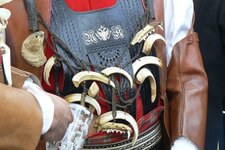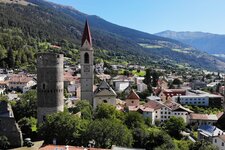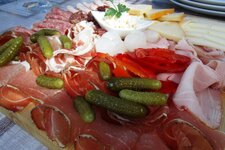The “Vinschgerle”, at that time a pair of bread made from sourdough, was first baked in the Val Venosta valley in the 13th century
Besides the Schüttelbrot (brittle bread), another bread, this time soft, has a long history behind it: the "Vinschger Paarl". The original recipe, the "Ur-Paarl nach Klosterart", was rediscovered in the Monte Maria Monastery in the Val Venosta valley. The South Tyrolean bakeries of the Middle Ages always had to pay attention to the shelf life of their products in order to have enough stock for the long winter months. The recipe comes from the last monk who baked the bread in the monastery, Alois Zöschg, but the bread was provably made here already in the 13th century.
The "Vinschgerle" is a palm-sized, 2-3 cm thick flatbread that is baked in pairs and consists of two types of dough: The pre-dough made from rye flour, water and yeast has to rest for an hour before the actual dough is added. Rye flour, wheat flour, water, yeast and the typical spices are put in there: salt, fennel, caraway and bread clover. The bread is then baked at 220 degrees C.
This type of bread is also common - in a rather larger form - in Tyrol and Vorarlberg, and is known as "Pari de séghel" in Trentino's Val di Non. Due to its high rye content, it stays fresh for a long time and is an excellent provision for longer hikes. Its flavour makes it the ideal accompaniment for Speck, South Tyrolean mountain cheese, or butter and jam. The "Urpaarl", on the other hand, is often served at weddings: Its shape is supposed to symbolise the union of the bridal couple.

















































